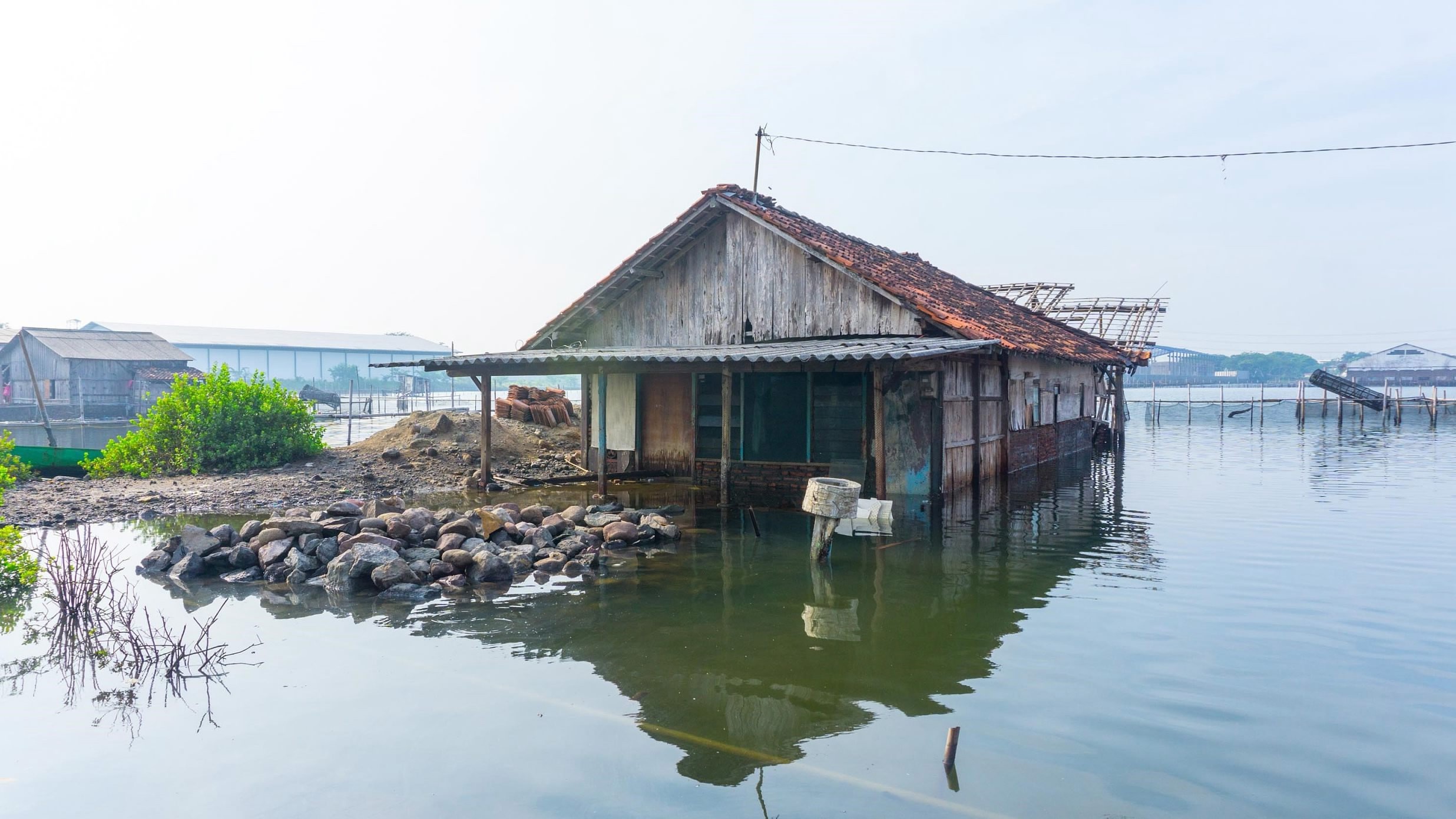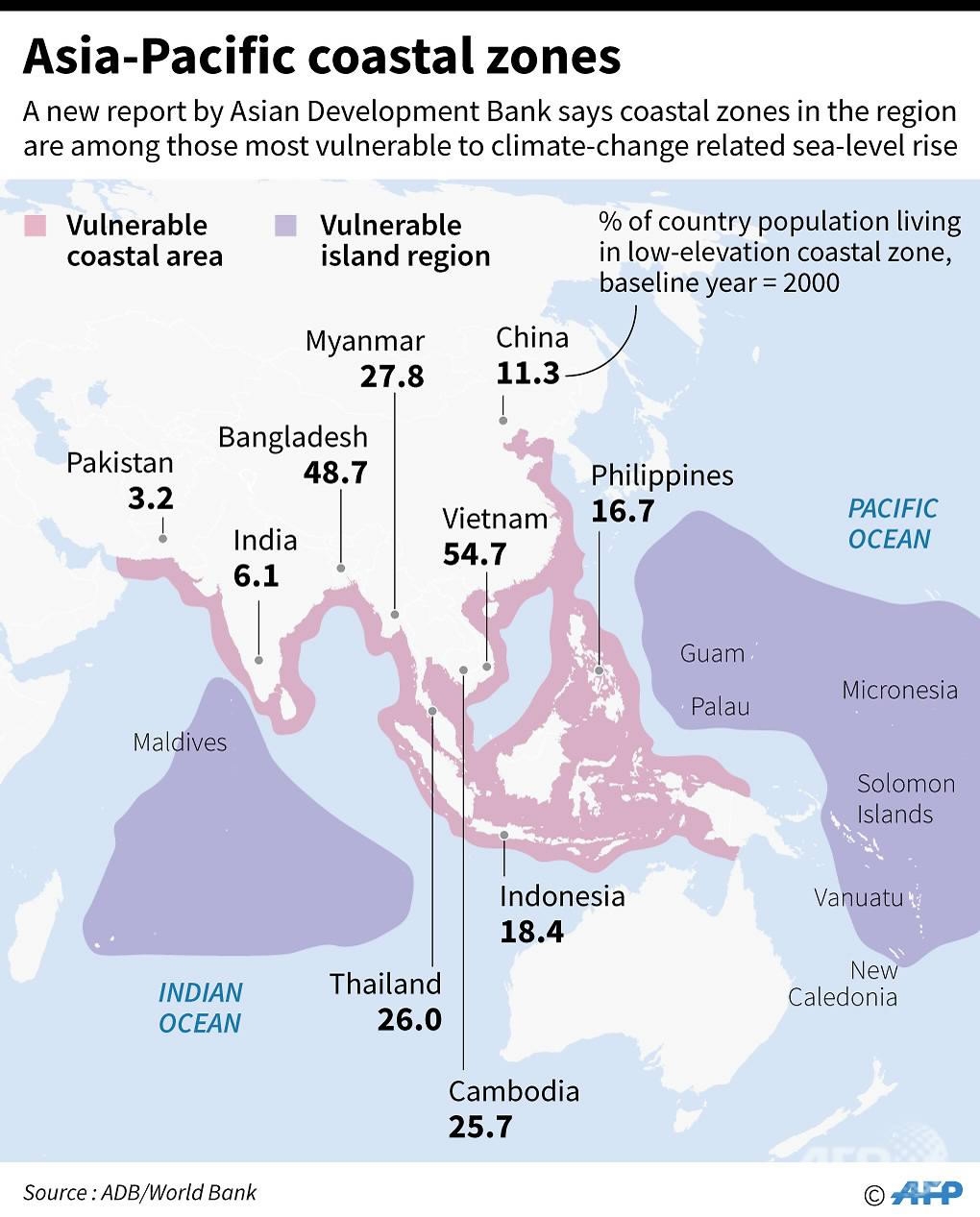
Tech & Sci
09:13, 15-Jul-2017
ADB warns climate change 'disastrous' for Asia

Climate change will be "disastrous" for Asia, undoing much of the phenomenal economic growth that has helped it make vast inroads against poverty, according to a report from the Asian Development Bank released on Friday.
A continued reliance on fossil fuels will see the world's most populous region face prolonged heat waves, rising sea levels, and changing rainfall patterns that will disrupt the ecosystem, damage livelihoods and possibly even cause wars, it said.
"Unabated climate change threatens to undo many of the development advancements of the last decades, not least by incurring high economic losses," the report from the Manila-based bank said.

Buildings submerged in sea water due to abrasion in Indonesia. /VCG Photo
Buildings submerged in sea water due to abrasion in Indonesia. /VCG Photo
By the end of the century, parts of the continent could see mean temperatures shoot up to eight degrees Celsius above pre-industrial levels, as the global mean temperature rises by half that, it added.
"A business-as-usual scenario will lead to disastrous climate impacts for the people of Asia and the Pacific, especially for poor and vulnerable populations," it said.
But it said the region could avert disaster by shifting to renewable energy sources.
While a 2-degree-Celsius rise will be difficult to manage, "one can assume that a 4-degree-Celsius increase would lead to humanitarian disasters in many nations and result in unmanageable migration flows or locked-in populations," the report said.
Asia as a whole would see sea levels rise by 1.4 meters (4.6 feet) within this century, nearly twice the projected increase under the Paris deal, and face more destructive cyclones, it said.

AFP Photo
AFP Photo
In this scenario, the report said the region's coral reef systems would collapse from mass bleaching, with severe consequences for fisheries and tourism.
Melting Asian glaciers would cause both floods and water shortages, disrupting agriculture, and increase dependence on rainfall to meet water needs.
The study projects additional heat-related deaths of nearly 52,000 elderly people across the region annually by the 2050s, nearly 8,000 extra diarrhoeal deaths in South Asia, and some 10,000 more malaria and dengue deaths in Asia.
Asia's global economic links mean that extreme climate events could disrupt supply chains not only in the region but also in the rest of the world, it warned.

Some of the streets on Miami Beach are flooded due to climate change. /VCG Photo
Some of the streets on Miami Beach are flooded due to climate change. /VCG Photo
Despite stunning economic growth that saw Asian per capita incomes rise 10-fold in the past 25 years, it remains home to the majority of the world's poor, the ADB said.
This, along with the fact that a large share of its population inhabit low-lying coastlines, has made the world's largest continent "particularly vulnerable" to climate change.
Myanmar, the Philippines, Bangladesh, Vietnam, Pakistan, and Thailand are among the world's top 10 countries most affected by extreme weather events, it said.
The ADB vowed in 2015 to double its climate finance mitigation investments to six billion US dollars by 2020, including two billion US dollars to help countries shift to renewable energy.
(Source: AFP)

SITEMAP
Copyright © 2018 CGTN. Beijing ICP prepared NO.16065310-3
Copyright © 2018 CGTN. Beijing ICP prepared NO.16065310-3